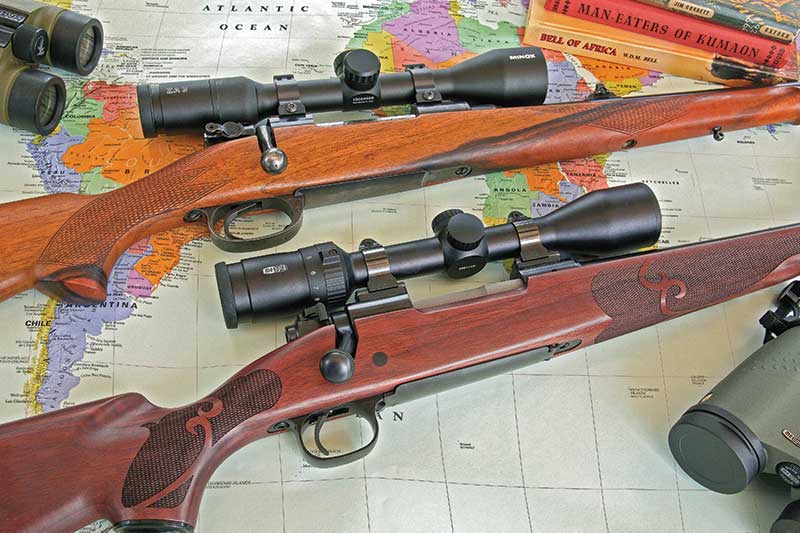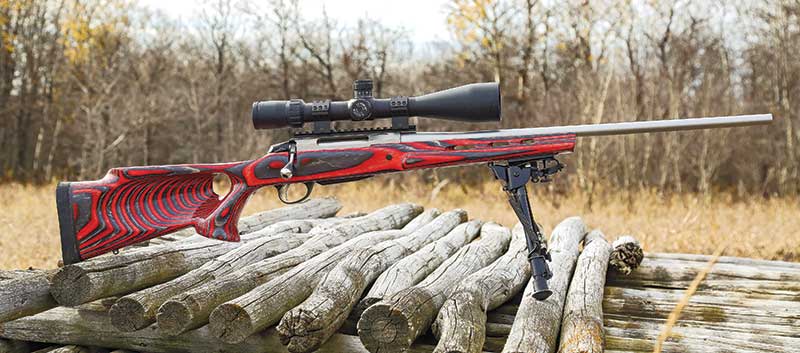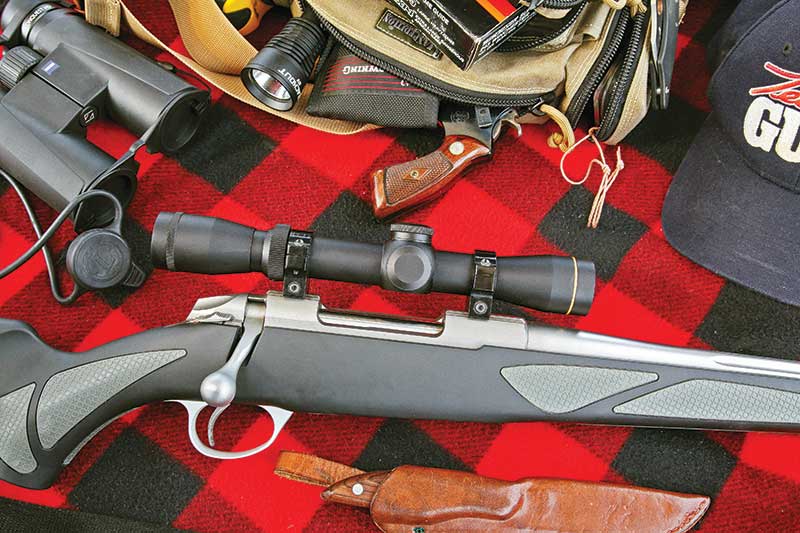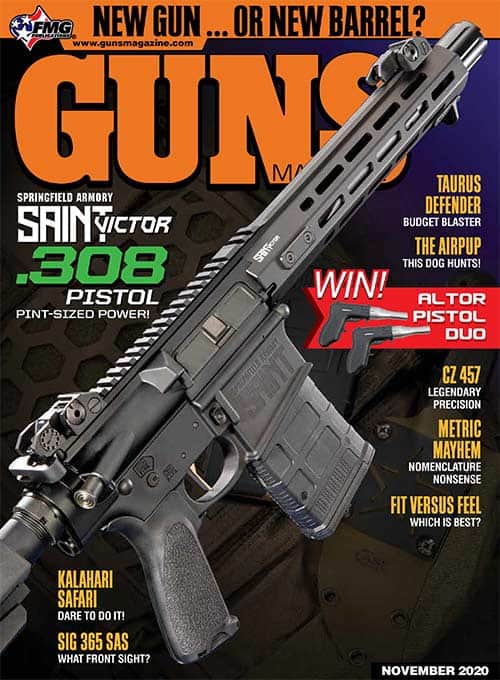Metric Mayhem
U.S. rifle calibers mix systems of measurement
The metric system (or “SI” for those who wear a man bun) may be the standard throughout most of the world but it hasn’t made much inroad in the U.S. There are exceptions, of course. Scientists use the metric system for its “logic” and in order to be consistent with their colleagues in other parts of the world. During the ’60s Vietnam vets learned to express distances in “clicks” while college kids, at least according to legend, learned about grams and kilos from the drug trade.
Mixing It Up
American riflemen freely use metric as well as Imperial terms. Remington had a whole metric series with the 5mm, 6mm, 6.5mm, 7mm and 8mm cartridges. Americans cheerfully mix the two systems, for example naming cartridges 6mm-.284/6.5-.300 Weatherby Magnum, or even mixing metric with years as in 6mm-’06 or 6.5mm-’06.
Rifle barrels are measured in two basic ways, bore diameter and groove diameter. Bore diameter is the interior diameter of the barrel as it comes from the drilling machine. A .30-’06 barrel, for example, has a bore diameter of 0.300″, as do many other .30-calibers such as .30-30 Winchester, .300 Savage, .300 Weatherby. Typically the rifling grooves are cut slightly deeper as bore size increases. With .22 caliber bores, the rifling grooves are generally (not always — in the shooting world there are exceptions to about everything) cut to a depth of 0.003″. Since grooves are cut on both sides of the bore the total depth is 0.006″, so the groove diameter is 0.006″ larger than bore diameter. Bullet diameter usually is the same as groove diameter.
Groovy
Barrels with bores above .22 cal. up to about .284 cal. generally have groove diameters 0.007″ larger than bore diameter, while those with above .284 groove diameter is usually 0.008″ larger than bore diameter. Remember there are always exceptions, and of course most factory barrels today are made by cold hammer forging or button rifling rather than with cut rifling.
Most of our centerfire .22 cartridges such as .222 and .223 Rem., .22-250, .220 Swift and others have a nominal bore diameter of 0.218″, a groove diameter of 0.224″, and fire 0.224″ bullets. For cartridges such as .243 Win., 6mm Rem., 6mm Creedmoor, .240 Wby. the bore/groove dimensions are 0.236″ and 0.243″. For American .25-caliber cartridges the numbers are 0.250″/0.257″. The various .270 cartridges have a bore diameter of 0.270″, groove diameter 0.277″. The .30 cal. cartridges have a bore diameter of 0.300″ and a groove diameter of 0.308″.
Some common metric sizes converted to inches (to three decimal places): 5mm = 0.197″; 6mm = 0.236″; 6.5mm = 0.256″; 7mm = 0.276″; 8mm = 0.315″; 9mm = 0.354″.
The 6mm/0.236″ diameter is particularly interesting as it has a long history in America. Way back in the 1890s the U.S. military developed and adopted the 6mm Lee Navy cartridge — very much over the objections of the “Old Guard” who were horrified enough at such small bores as the .30-40 Krag replacing their beloved .45-70.
The Other Direction
Now let’s convert the other way, changing popular bullet inch diameters to metric: 0.224″ = 5.69mm; 0.243″ = 6.17mm; 0.257″ = 6.53mm; 0.264″ = 6.71mm; 0.277″ = 7.04mm; 0.284″ = 7.21mm; 0.308″ = 7.82mm. A reloader who has taken the time to plow through these numbers is likely thinking, “Hold on, this can’t be right! The box of bullets I just bought says 6mm .243, or 6.5mm .264. or 7mm .284. Are you suggesting bullet makers can’t read a conversion table?”
Not at all, it’s just they have another goal, which is for you the buyer to get the right bullets for the cartridge you are reloading. If you have a 6mm Rem., Creedmoor or Lapua, just get bullets marked 6mm in the weight you want and don’t fret the actual bullet diameter is 6.17mm.
Speaking of bullet weights, some of the unusual bullet weights we have are due to metric roots. By “unusual” I mean bullets for 7mm cartridges with weights of 139 gr. or 154 gr. Why not just go to 140 or 150 gr.? Well, the European practice is to measure weights in grams. A 5-gram bullet is equivalent to 77 grains. Other examples: 6/93 gr., 7/108 gr., 8/123 gr., 9/139 gr., 10/154 gr.
Going The Distance
Standard barrel lengths on American-made rifles are usually 18, 20, 22 or 24″ long so why do European-made rifles have oddball barrel lengths? Tikka T3 rifles generally have 22 7/16″ barrels in standard cartridges, 24 3/8″ for magnum cartridges. They are even numbers, but in metric terms — 570mm and 620mm respectively. My much-loved Sako Finnlight .243 has a 20.27″ barrel and weighs 6 lb. 2.8 oz. In metric terms it has a 515mm barrel and weighs 2.8 kg. Actually I don’t care, I just think of it as a 6-lb. rifle with a 20″ barrel.
Twisting It Up
Barrel twist rates are one area in which American measurements seem to dominate. Twists are generally measured as one turn in “X” inches. A 1:10 twist is one rotation of the bullet in 10″. The system is so well known we just say twist is 1:8, 1:12 and so forth.
European makers do use metric terms such as one rotation in 220mm equivalent to 1:8.66. My Sako Finnlight .243 is shown as having a 1:10 twist (1:254mm) though I suspect it is actually 1:250mm (1.9.84). Since the U.S. is by far the biggest market for sporting rifle sales, it makes sense to use terms Americans are used to.








